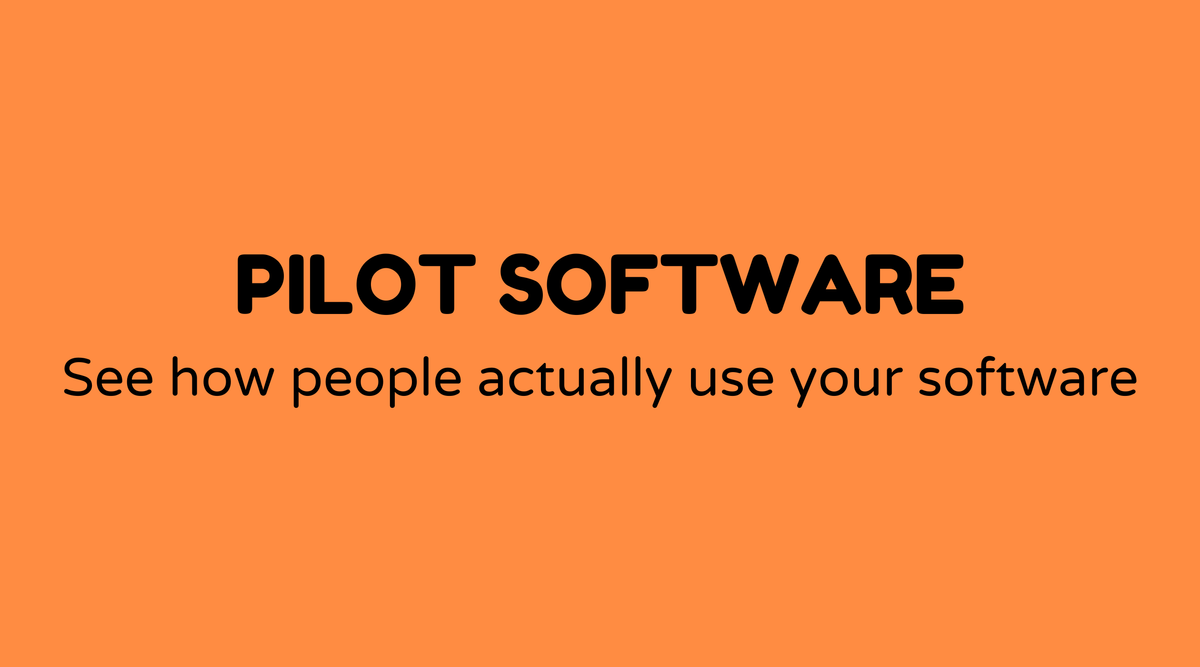Pilot Software

Overview of Pilot Software:
When considering the launch of new software, a test phase is essential. Enter pilot software—the key component of successful software introductions! It involves releasing a version to a limited audience. Why? To identify bugs and gather user insights. Companies can truly benefit by making adjustments before the official launch. We’ve all witnessed the chaos of full launches due to unexpected issues, right? A pilot program strives to prevent that turmoil.
Why Pilot Software Matters:
Ever hear the saying, "Better safe than sorry"? That captures the essence of pilot software. In today's technology-driven landscape, software faults can have serious consequences—think lost sales, damage to reputation, or data breaches. By implementing a pilot, developers can recognize issues early and address them proactively. It’s like getting a preview for users, allowing companies to refine their product before a complete release.
What is Pilot Software:
Pilot software is fundamentally a trial version of a software application. This version is made available to a specific group to evaluate features, system reliability, compatibility, and other important elements in a controlled setting. The goal is to assess initial reactions of real users before a broader rollout.
Organizations typically gather feedback on user experiences, pinpoint potential issues, and then make required adjustments. Through these phased rollouts, organizations reduce risks while optimizing return on investment.
How to Execute Pilot Software:
Wondering how to implement pilot software successfully? Follow these straightforward steps:
-
Define Goals: Start by articulating what you wish to accomplish with the pilot, such as validating features, testing functionalities, or obtaining user feedback.
-
Select Participants: Choose a small group that reflects your target audience. This ensures valuable feedback.
-
Prepare Resources: Ensure you have the necessary infrastructure, like servers and support teams, ready for the pilot.
-
Gather Feedback: Create feedback mechanisms to collect insights continuously. Tools like surveys or feedback forms are highly effective.
-
Analyze Results: After your trial period, review the data to determine what was effective and what wasn't.
-
Refine and Progress: Implement the required changes, then decide if you're prepared for a full release.
Examples of Pilot Software:
Notable examples include organizations like Microsoft and Google, which regularly release beta versions of their software. Google often employs beta testing for new services or applications, inviting select users to participate in their Early Access Programs. Conversely, Microsoft's Windows Insider Program serves as an exemplary model of pilot software, allowing users to engage with new features prior to their public rollout.
FAQs:
What is a pilot software program?
A pilot software program is an initial version of a software product launched to a limited group for testing and feedback before a full-scale release.
Why is pilot software important?
Pilot software assists in identifying bugs, gathering user feedback, and making essential improvements, thus minimizing the risks associated with a complete launch.
Who uses pilot software?
Developers, tech firms, and service providers in various sectors utilize pilot software to refine their products.
How long should a pilot software phase last?
The length can vary, but generally, a pilot phase lasts between one to three months, depending on the complexity and feedback.
Can any software be piloted?
Yes, virtually any software can go through a pilot phase. It's common for applications, platforms, and updates for existing software.
**
What happens after the pilot phase?**
After the pilot, companies analyze feedback, make needed adjustments, and prepare for a full-scale launch. Depending on the results, another pilot may be undertaken.



